Eight things a dermatologist wants you to know about skin cancer
Worried about missing out on vitamin D? Or getting sun damage while driving, even with tinted windows? Here’s some sensible advice from a specialist that could save your skin.
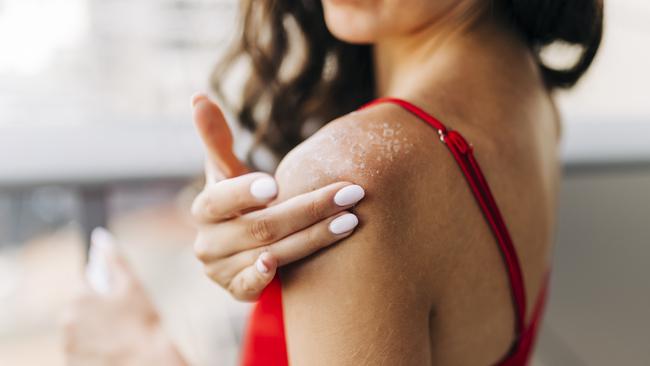
Australia is, unfortunately, the world leader in skin cancer of all types, and particularly the most deadly form of skin cancer, melanoma.
Melanoma is estimated to be the 11th most common cancer in Australia, causing up to five deaths every day.
The prevalence of melanoma and skin cancer more generally is the result of a perfect storm of factors: our high UV index, our outdoor lifestyle, our sun behaviour, and the fact that the population now is predominantly fair-skinned.
So it’s very important that we educate people about the dangers and the best way to respond.
All children – yes even teenagers – should wear a hat outdoors
The popular Slip, Slop, Slap campaign of several years ago (Slip on a T-shirt, Slop on some sunscreen and Slap on a hat) was extended to include Seek the Shade and Slide on Some Sunnies. It’s still a catchy way for kids to be taught about good sun behaviour.
But one of my particular concerns is that while primary schools and daycare centres are strict about “no hat, no play” policies, and often kids put on sunscreen when they go out at recess and lunch, this all completely falls away in secondary school.
Even at non-government schools, where it may be easier to enforce individual school policies, hat-wearing is often not mandatory, nor is sunscreen readily available.
I understand, from dealing with my own children’s schools and others, that many simply pass the buck, saying oh, well, it’s now the children’s responsibility. However, what I would say is you’ve developed these great sun-protection strategies and great sun-protection behaviour in primary school kids, and to let it all fall away at the age of 12 or 13 seems absolutely nonsensical.
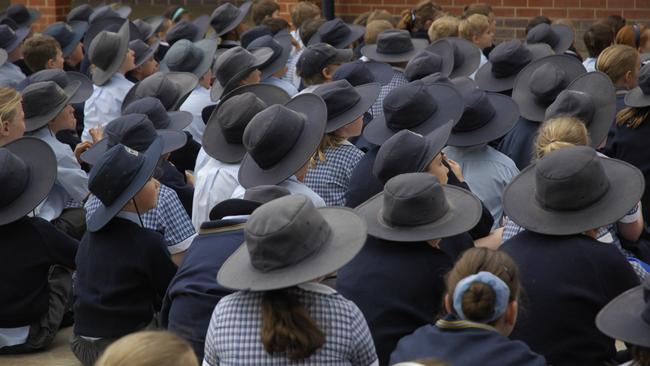
Some studies have shown that wearing a broadbrimmed hat can decrease skin cancers on the head and neck by 70 per cent. That is absolutely huge, and a valid reason for schools to make hat-wearing mandatory in senior school as well in primary school.
If it’s mandatory, then the fact that it’s not cool to be a 15-year-old wearing a hat doesn’t matter, because all your friends are doing it as well.
Schools have the ability to do this, and I find it gobsmacking that they can have uniform rules and rules about having your socks pulled up and rules about your hair, but not rules about a hats and sunscreen, when that is actually much more important for a person’s health and their long-term risk of developing skin cancer later in life.
Know your doctor – and their training
Who are the experts in skin cancer? The only specialists in skin (as well as hair and nails) are dermatologists. They have done four to five years of extra training just specialising in skin, hair and nails. This is over and above the usual five to six-year medical degree and then junior medical training, internship and residency. All up it takes between 16 and 18 years to become a specialist dermatologist after finishing high school!
An easy way to know whether you’re seeing someone who is a skin cancer specialist is to look for the letters FACD after their name. This denotes they are a fellow of the Australasian College of Dermatologists. This is the only body that dermatologists are members of if they are a locally trained Australian dermatologist. Overseas-trained dermatologists may have other letters, but still be recognised by the Australasian College of dermatology and recognised by the Australian Medical Council as specialists.
Now, not everyone needs to see a dermatologist, and the first port of call may be your local family GP. Your GP can perform a skin check for you, and if they feel concerned about something, they will refer you on to a dermatologist. Or they may look at you and say, “No, your skin check is too complicated. You’ve got too many moles, too many worrying moles. You need to see a specialist.” Or they may examine you and say, “Look, you’re fine. Your overall risk is low, and I’d be happy to see you in two years.”
Skin cancer clinics are staffed by general doctors who may have an interest in skin but who are not specialist dermatologists. Some large organisations offer skin checks at work, but these skin checks are usually done by nurses or sometimes by GPs, but not specialists. So these are the ways to know if the person you’re seeing is actually a specialist in skin.
How do I know if I need a skin check?
You can do a preliminary check on your skin at home. A simple way is, if you’ve got a partner or a close friend, you can check each other’s back and the backs of their legs once a quarter. An easy way to remember is to do it at the change of season. And if you or your friend or partner notice something new, something changing, or something not healing, it should be looked at. This is especially true after the age of 30 to 40.
We all know our bodies pretty well, so if something suddenly catches your eye and you think, “Oh, I think that’s been there for a while, but suddenly I’m noticing it”, don’t ignore that. A change may not be of concern, it may not be a malignant change, but you are not trained to know what is worrying and what is not. So seek the assistance of a healthcare professional: your family GP, or a dermatologist.
Who needs to get checked? (Hint: everybody)
From the age of 40, every fair-skinned Australian should have a full skin examination. That means top to toe. The results of that examination will determine how often they need to be seen for follow-up checks. People with darker skin tones, what we call skin phototype three to six (often people of Mediterranean backgrounds, South-East Asians and darker skin tones beyond that) are at much lower risk of skin cancer. They have higher levels of melanin, which is what accounts for their skin colouring, and it acts like an intracellular sunscreen.
However, it’s not a get-out-of-jail-free card. Italians, Greeks, and other Mediterranean nationalities still get skin cancers, but they tend to get them later in life, more in their 60s and 70s, unlike the Anglo-Saxons or Anglo-Celtics, who are skin phototype one and two, and can often be getting skin cancers in their 40s and 50s.
Don’t kick the bucket
I am often asked by patients if there is any point in improving their sun-protection behaviour if they already had a lot of sun exposure when they were young. They say, “Well, look, doctor, you know, it’s too late now, all the damage is already done”, but that’s not the case.
I often use the analogy that every extra bit of sun exposure is like drops of water in a bucket, and it’s once that bucket overflows, you get a skin cancer.
So yes, you may have had a lot of damage done in your childhood and your early adulthood, but ongoing sun exposure can further transform that damage from being either just a cluster of cells that are slightly abnormal or from a precancerous sunspot into a fully fledged skin cancer, or from a mole that becomes abnormal, to a melanoma.
So ongoing sun protection and changing your sun protection behaviour is important.
Myth busted: tinted windows are not enough
Many people don’t realise that ultraviolet A, which is a long-range wavelength of UV light and part of normal sunlight, penetrates through window glass. It doesn’t matter if the car windows are tinted or not. So you need to be extra careful if you’re doing a lot of driving.
That’s why truck drivers will often have a lot of skin cancers and a lot of sun damage on their hands and forearms. In the old days, before most vehicles had airconditioning, drivers would often hang an arm out the window, but now even inside the car with the windows up and tinted windows, you’re still getting UVA.
For many years, it was thought that UVA didn’t cause any damage, but we now know that UVA does contribute to melanoma and skin cancer, and UVA is particularly responsible for a lot of the brown marks or splotches that are colloquially called liver spots, or medically called solar lentigines.
Importantly, there’s some evidence that even visible light, although it does not contribute to skin cancer, can contribute to ageing of the skin and those brown marks.
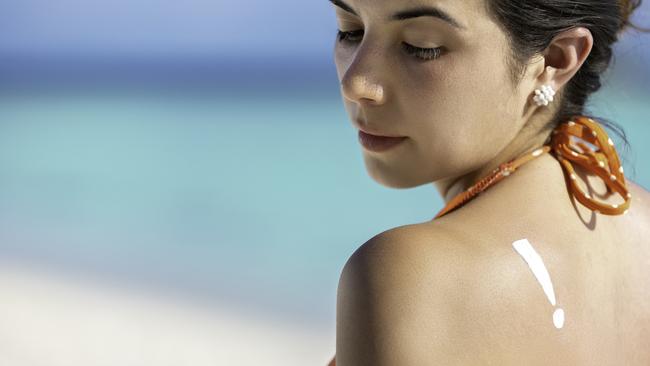
What are the rules for sunscreens?
The best types of sunscreens contain UV absorbers and UV blockers.
A UV absorber is a molecule that will absorb the effect of ultraviolet light and neutralise its effect on DNA to prevent it from causing DNA damage. A UV blocker is something like zinc or titanium dioxide. When UV light hits the blocking molecule, it bounces off the skin and is not absorbed by the cell.
Sunscreens often say they give four hours of protection. Yes, there is still a little bit of sun protection left at four hours, but most of the UV blocking and UV absorbing effect is gone after two hours, so you really need to reapply.
Australia has a very high ambient level of UV and so we need to think about sunscreen not only when we are going to the beach, but also for day-to-day activities: walking to the bus stop, walking to the train, playing sports, going for a walk in the afternoon. All of these things need the best sun protection behaviour.
Sunscreen should be worn every day. There’s 80 per cent UV transmission, even on cloudy days. And even in winter, sunscreen needs to be applied and reapplied if you are going outside or sitting next to a window.
Many people don’t use enough sunscreen. The amount of sunscreen that should be used is often measured in the fingertip unit, or in a teaspoon. A teaspoon is 5ml, which is a lot more than you might think. The recommendation is to use about a teaspoon for each limb, and the front and back of your body plus a teaspoon for your head, neck and ears, making about 35ml all up.
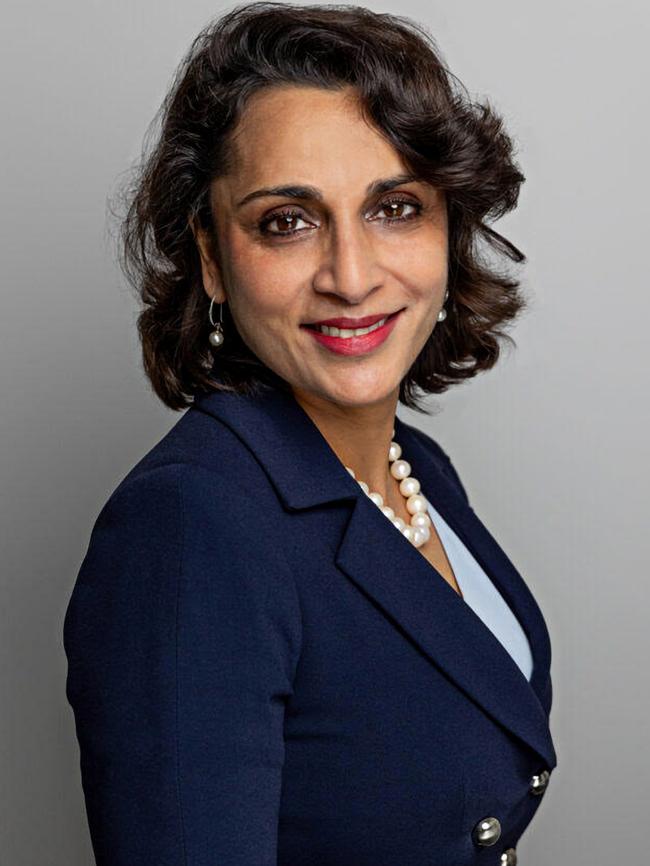
But won’t I get vitamin D deficiency?
Now, the issue with sunscreen can often be caught up with people worrying about vitamin D. I actually did a PhD in vitamin D and sun protection, and my PhD supervisor used to say a simple way to make sure you’re getting enough vitamin D is to roll up your sleeves and have 10 to 15 minutes of sun exposure outside the hours of 11am to 3pm if it’s summertime, or within the hours of 11am to 3pm if it’s winter time.
Now you might ask, why the forearms? Well, that’s an easily accessible place: you can roll up your sleeves and it’s not exposing the face more, because the face gets the most UV regardless of how good we are with our sun protection. And on the face, the poor old nose tends to be the area most affected because it projects outwards. That’s one of the reasons skin cancers can commonly occur on the nose and, more often in men, on the tops of the ears and the back of the neck.
I think that as our knowledge about melanoma and other forms of common skin cancers – squamous cell cancers, basal cell cancers – improves and our sun protection improves, we can at least level off the climb in the incidence of these skin cancers.
With better detection and self-checking, hopefully we can reduce the burden of these skin cancers on people and their life expectancy, as well as the burden on our health system and our health budget.
Dr Ritu Gupta, MBBS (Hons), PhD, FACD, is a medical and cosmetic dermatologist.
This column is published for information purposes only. It is not intended to be used as medical advice and should not be relied on as a substitute for independent professional advice about your personal health or a medical condition from your doctor or other qualified health professional.





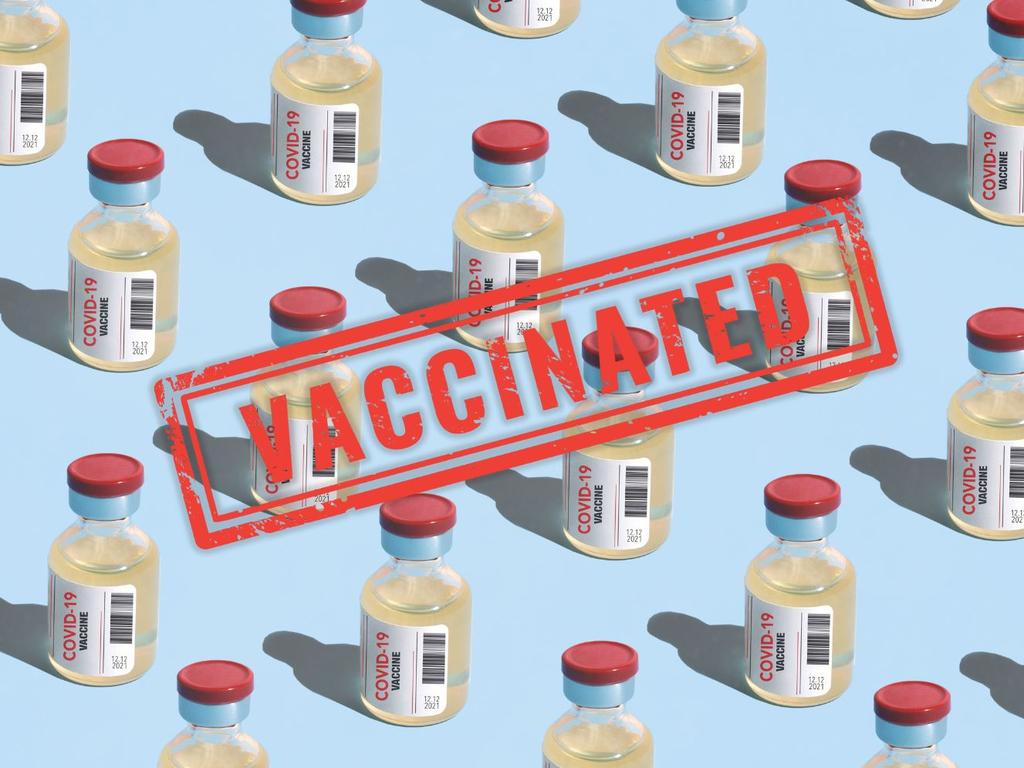
To join the conversation, please log in. Don't have an account? Register
Join the conversation, you are commenting as Logout